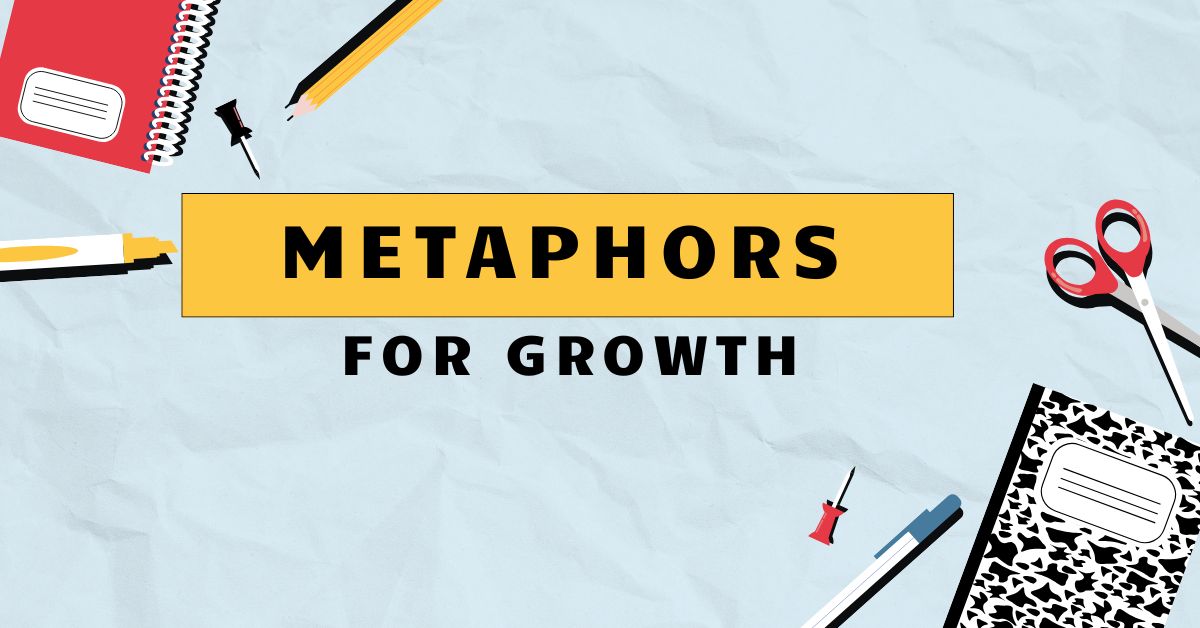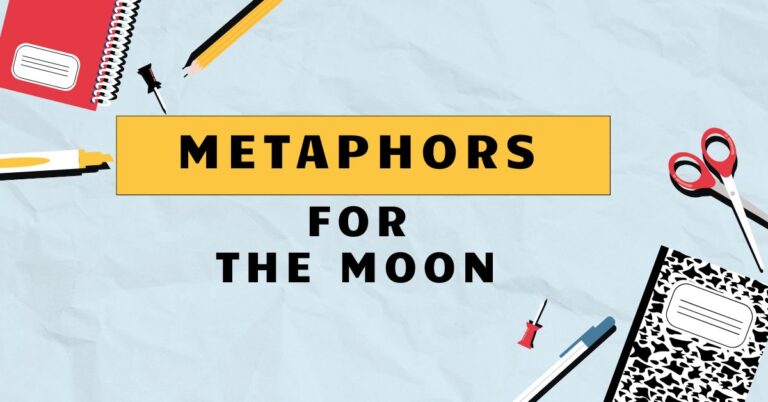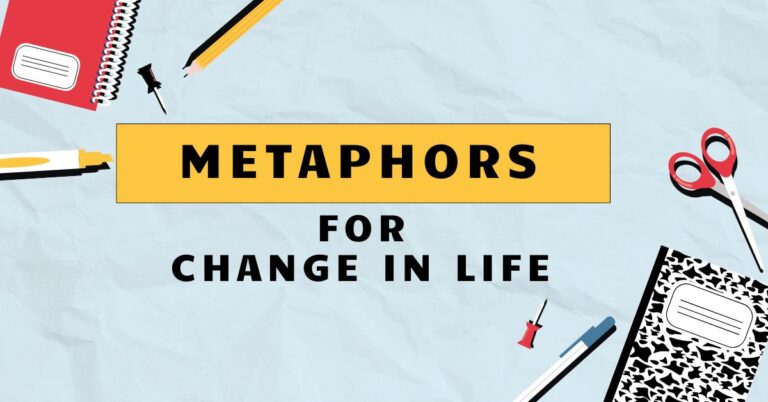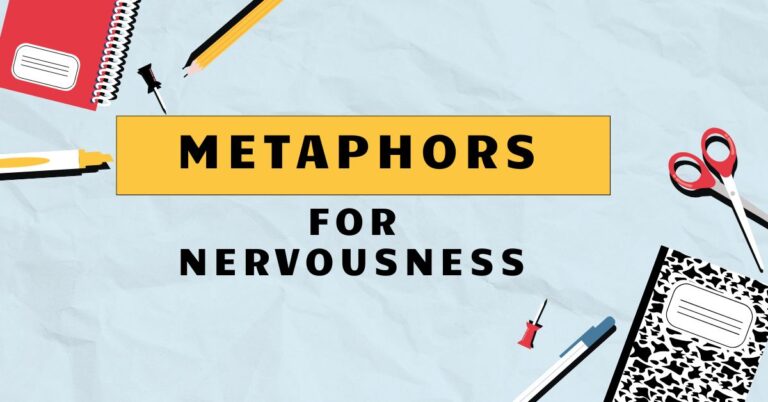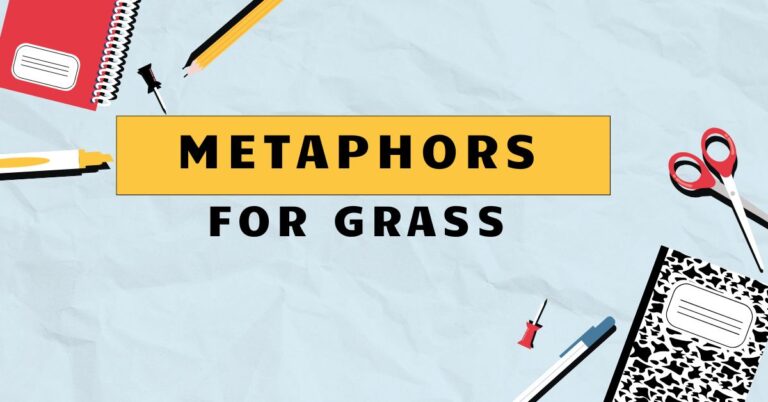45 Metaphors for Growth: Understanding Figurative Language
Metaphors are a powerful tool in the English language, allowing us to convey complex ideas and emotions in a vivid and relatable way. Understanding metaphors, especially those related to growth, enhances reading comprehension, writing skills, and overall communication effectiveness.
This article explores the concept of metaphors for growth, examining their structure, types, and usage, providing numerous examples and practical exercises to help you master this essential aspect of figurative language. Whether you’re a student, writer, or language enthusiast, this comprehensive guide will deepen your understanding and appreciation of metaphors in the context of personal and professional development.
Table of Contents
- Introduction
- Definition of Metaphors for Growth
- Structural Breakdown of Growth Metaphors
- Types of Growth Metaphors
- Examples of Metaphors for Growth
- Usage Rules for Metaphors for Growth
- Common Mistakes with Growth Metaphors
- Practice Exercises
- Advanced Topics in Metaphors for Growth
- Frequently Asked Questions
- Conclusion
Definition of Metaphors for Growth
A metaphor is a figure of speech that directly compares two unlike things without using “like” or “as.” It asserts that one thing *is* another, creating a vivid image and deeper understanding. Metaphors for growth specifically use this comparison to describe processes of development, improvement, and progress, whether personal, professional, or even organizational.
The function of growth metaphors is to make abstract concepts like learning, progress, and evolution more tangible and relatable. By associating these concepts with concrete images, metaphors help us understand and visualize the process of growth.
They add emotional impact and memorability to our communication.
These metaphors are used extensively in literature, business communication, personal development, and everyday conversation. They offer a concise and impactful way to convey the idea of change and positive transformation, making complex ideas more accessible and engaging.
The context often dictates the most appropriate metaphor, depending on the audience and the specific type of growth being described.
Structural Breakdown of Growth Metaphors
Understanding the structure of a metaphor involves identifying thetenor(the subject being described), thevehicle(the object or concept used for comparison), and theground(the shared characteristics between the tenor and the vehicle). In growth metaphors, the tenor is typically a person, organization, or idea undergoing development.
The vehicle is the concrete image or concept used to represent that growth. The ground consists of the qualities both share, such as gradual progression, nurturing, or building upon a foundation.
For example, in the metaphor “She blossomed into a confident leader,” the tenor is “she,” the vehicle is “blossomed,” and the ground is the gradual process of development and the emergence of beauty and strength. The effectiveness of a metaphor lies in the strength of the connection between the tenor and the vehicle, and how clearly the ground is communicated.
The underlying pattern of growth metaphors often involves a transformation from a smaller, less developed state to a larger, more mature one. This transformation can be represented through various stages, such as planting a seed, nurturing a plant, constructing a building, or weathering a storm.
Each stage highlights different aspects of the growth process, emphasizing the effort, time, and resilience required for successful development.
Types of Growth Metaphors
Agricultural Metaphors
Agricultural metaphors are some of the most common and easily understood growth metaphors. They draw parallels between the processes of planting, nurturing, and harvesting crops and the development of skills, relationships, or organizations.
These metaphors often emphasize the importance of patience, hard work, and careful cultivation.
Examples include “sowing the seeds of success,” “reaping the rewards of hard work,” and “cultivating a positive attitude.” These metaphors highlight the idea that growth requires consistent effort and attention over time, and that the results are often proportional to the investment made.
Natural Phenomena Metaphors
Natural phenomena metaphors use natural processes like the changing of seasons, the flow of a river, or the weathering of a rock to represent growth. These metaphors often emphasize the cyclical nature of growth, the challenges that must be overcome, and the resilience required to adapt to changing circumstances.
Examples include “weathering the storm,” “navigating uncharted waters,” and “a rising tide lifts all boats.” These metaphors suggest that growth is not always linear or easy, but that it is a natural and inevitable part of life.
Developmental Stage Metaphors
Developmental stage metaphors compare growth to the stages of human development, such as infancy, childhood, adolescence, and adulthood. These metaphors often highlight the different challenges and opportunities that arise at each stage, and the importance of learning and adapting as we grow.
Examples include “taking baby steps,” “going through growing pains,” and “coming of age.” These metaphors emphasize the idea that growth is a process of continuous learning and adaptation, and that setbacks are a normal part of the journey.
Building & Construction Metaphors
Building and construction metaphors represent growth as a process of constructing a building, with each stage representing a different aspect of development. These metaphors often emphasize the importance of a strong foundation, careful planning, and consistent effort.
Examples include “building a strong foundation,” “laying the groundwork for success,” and “constructing a brighter future.” These metaphors highlight the idea that growth requires careful planning and consistent effort, and that the results are often proportional to the investment made.
Examples of Metaphors for Growth
The following tables provide extensive examples of each type of metaphor for growth, illustrating their usage in various contexts.
Agricultural Examples
This table presents a range of agricultural metaphors used to describe growth, highlighting the connection between cultivation and personal or professional development. Notice how each metaphor evokes a sense of nurturing, patience, and eventual reward.
| Metaphor | Explanation | Example Sentence |
|---|---|---|
| Sowing the seeds of success | Initiating actions that will lead to future achievements. | By investing in education, they are sowing the seeds of success for future generations. |
| Reaping the rewards | Enjoying the benefits of hard work and dedication. | After years of dedicated practice, she is finally reaping the rewards of her musical talent. |
| Cultivating a positive attitude | Nurturing and developing a positive mindset. | He spent years cultivating a positive attitude, which helped him overcome many challenges. |
| Bearing fruit | Producing positive results or outcomes. | Their collaborative efforts are finally bearing fruit, with increased sales and customer satisfaction. |
| A fertile ground for growth | An environment that is conducive to development and progress. | The innovative culture of the company provides a fertile ground for growth and creativity. |
| Planting the idea | Introducing a new concept or suggestion. | The consultant planted the idea of restructuring the department during the meeting. |
| Watering the seeds | Providing support and resources for growth. | Mentorship programs are essential for watering the seeds of young talent. |
| Harvesting knowledge | Gaining insights and understanding through learning. | After the conference, he felt like he was harvesting knowledge from the various presentations. |
| Weeding out the bad habits | Eliminating negative behaviors or practices. | To improve productivity, they focused on weeding out the bad habits that were slowing them down. |
| A budding entrepreneur | A new and promising businessperson. | She is a budding entrepreneur with innovative ideas and a strong work ethic. |
| Rooted in tradition | Established and grounded in long-standing practices. | The company’s success is rooted in tradition, but they are also open to new innovations. |
| A blossoming career | A career that is developing and thriving. | She has a blossoming career in the field of environmental science. |
| Tilling the soil | Preparing the ground for new opportunities. | By networking and building relationships, he was tilling the soil for future partnerships. |
| A thorny issue | A difficult or problematic situation. | The budget cuts presented a thorny issue that needed careful consideration. |
| Growing like a weed | Growing rapidly and uncontrollably (often used negatively). | The bureaucracy in the department was growing like a weed, hindering progress. |
| A bumper crop of ideas | An abundance of new and innovative ideas. | The brainstorming session yielded a bumper crop of ideas for the new marketing campaign. |
| Pruning the deadwood | Removing unproductive elements to promote growth. | The restructuring involved pruning the deadwood to streamline operations. |
| A seasoned professional | An experienced and knowledgeable individual. | He is a seasoned professional with over 20 years of experience in the industry. |
| A green shoot of recovery | An early sign of improvement or recovery. | The slight increase in sales was seen as a green shoot of recovery for the struggling business. |
| Nurturing talent | Providing support and guidance for talent to develop. | The company is committed to nurturing talent through mentorship and training programs. |
| A late bloomer | Someone who achieves success or recognition later in life. | Although he struggled in his early years, he turned out to be a late bloomer in the literary world. |
| The fruits of one’s labor | The positive results of one’s hard work. | After years of dedication, they finally enjoyed the fruits of their labor. |
| A barren landscape | A situation lacking in opportunities or resources. | The economic downturn left a barren landscape for new businesses. |
| Sowing discord | Creating conflict and disagreement. | His inflammatory remarks were sowing discord among the team members. |
| A cultivated taste | A refined and developed preference. | She has a cultivated taste for fine art and classical music. |
| Reaping what you sow | Experiencing the consequences of your actions. | If you don’t study, you’ll reap what you sow and fail the exam. |
Natural Phenomena Examples
This table showcases metaphors that draw on natural phenomena to illustrate growth. These metaphors often highlight resilience, adaptability, and the power of natural processes in fostering development.
They emphasize the idea that growth is a natural and often transformative process.
| Metaphor | Explanation | Example Sentence |
|---|---|---|
| Weathering the storm | Surviving a difficult or challenging period. | The company managed to weather the storm of the economic recession through careful planning. |
| A rising tide lifts all boats | When conditions improve, everyone benefits. | The new economic policies are expected to help everyone, as a rising tide lifts all boats. |
| Navigating uncharted waters | Exploring new and unfamiliar territory. | The startup is navigating uncharted waters in the rapidly evolving tech industry. |
| Erosion of trust | Gradual loss of confidence or faith. | Constant miscommunication led to an erosion of trust between the team members. |
| A watershed moment | A significant turning point. | The signing of the peace treaty was a watershed moment in the history of the two nations. |
| A ripple effect | A chain reaction of consequences. | The new policy had a ripple effect, impacting various departments within the organization. |
| The calm before the storm | A period of tranquility before a period of turmoil. | Everyone enjoyed the calm before the storm as they prepared for the busy holiday season. |
| A sea change | A significant and profound transformation. | The introduction of new technology brought about a sea change in the way the industry operated. |
| A slow burn | Something that develops gradually over time. | His career was a slow burn, but he eventually achieved great success. |
| A flash flood of ideas | A sudden and overwhelming influx of new ideas. | The brainstorming session resulted in a flash flood of ideas for the new marketing campaign. |
| Under the weather | Feeling unwell or not at one’s best. | He was feeling under the weather and decided to take a day off from work. |
| Clear skies ahead | A promising and positive outlook for the future. | With the new management team in place, there are clear skies ahead for the company. |
| A whirlwind romance | A very quick and intense romantic relationship. | They had a whirlwind romance and got married just a few months after meeting. |
| A landslide victory | An overwhelming and decisive victory. | The candidate won the election with a landslide victory. |
| Floating on air | Feeling extremely happy and elated. | After receiving the job offer, she was floating on air. |
| A light breeze of change | A gentle and subtle shift in the environment. | There’s a light breeze of change in the company’s culture since the new CEO took over. |
| Rolling in like thunder | Arriving with a sudden and forceful impact. | The new regulations came rolling in like thunder, catching many businesses off guard. |
| Calm waters | A peaceful and stable situation. | After the turbulent period, the company is now sailing in calm waters. |
| A tidal wave of support | An overwhelming surge of encouragement and assistance. | The community showed a tidal wave of support for the victims of the disaster. |
| Drifting apart | Gradually growing distant from each other. | Over time, they started drifting apart due to their different interests and priorities. |
| A mountain to climb | A significant challenge or obstacle to overcome. | Starting a new business is a mountain to climb, but it can be incredibly rewarding. |
| Frozen in place | Unable to move or take action due to fear or uncertainty. | The team was frozen in place, unsure of how to proceed with the project. |
| Swimming against the tide | Going against the prevailing trend or opinion. | He was swimming against the tide when he argued for a more conservative approach. |
| A flood of emotions | An overwhelming surge of feelings. | She experienced a flood of emotions when she saw her family after many years apart. |
| A ray of sunshine | A source of happiness or hope in a difficult situation. | Her positive attitude was a ray of sunshine during the challenging project. |
Developmental Stage Examples
This table focuses on metaphors that use stages of human development to represent growth. These metaphors often highlight the progression from infancy to maturity, emphasizing the learning, challenges, and transformations that occur along the way.
They are particularly useful for describing personal and professional development.
| Metaphor | Explanation | Example Sentence |
|---|---|---|
| Taking baby steps | Making slow and gradual progress. | They are taking baby steps towards implementing the new technology in the company. |
| Going through growing pains | Experiencing difficulties and challenges during a period of growth. | The company is going through growing pains as it expands into new markets. |
| Coming of age | Reaching a stage of maturity and independence. | The protagonist came of age during his transformative journey through the wilderness. |
| In its infancy | In the early stages of development. | The field of artificial intelligence is still in its infancy, but it holds great promise. |
| A fledgling business | A new and inexperienced business. | She started a fledgling business with just a small amount of capital. |
| A mature market | A market that has reached a stage of saturation and stability. | The smartphone market is now considered a mature market with limited growth potential. |
| Reaching adulthood | Achieving a state of full development and responsibility. | The project is reaching adulthood, ready to be launched and fully implemented. |
| Adolescent phase | A phase characterized by rapid changes and challenges. | The company is going through an adolescent phase as it struggles to define its identity. |
| A youthful exuberance | A lively and energetic enthusiasm. | The team brought a youthful exuberance to the project, injecting it with fresh ideas. |
| An old soul | Someone who is wise and mature beyond their years. | Despite her young age, she seemed like an old soul with deep insights and understanding. |
| Crawling before walking | Learning the basics before moving on to more advanced tasks. | We need to focus on crawling before walking, ensuring the foundation is solid before expanding. |
| Teething problems | Minor issues and difficulties encountered in the early stages. | The new system is experiencing some teething problems, but they are being addressed. |
| Childhood dreams | Innocent and idealistic aspirations. | He never gave up on his childhood dreams of becoming a professional musician. |
| A second childhood | A period of renewed energy and enthusiasm in old age. | After retirement, he enjoyed a second childhood, pursuing his hobbies with passion. |
| The dawn of a new era | The beginning of a significant and transformative period. | The invention of the internet marked the dawn of a new era in communication. |
| A midlife crisis | A period of self-doubt and reevaluation in middle age. | He went through a midlife crisis and decided to quit his job to pursue his passion. |
| A senior moment | A brief lapse in memory or cognitive function in old age. | She had a senior moment and forgot where she had parked the car. |
| A blank slate | A fresh start with no prior knowledge or experience. | They approached the project with a blank slate, ready to learn and innovate. |
| A formative experience | An experience that has a significant impact on one’s development. | His time volunteering abroad was a formative experience that shaped his worldview. |
| In one’s prime | At the peak of one’s abilities and performance. | She is in her prime as a tennis player, winning multiple championships. |
| A new lease on life | A renewed sense of purpose and vitality. | After recovering from his illness, he felt like he had a new lease on life. |
| A growing trend | A trend that is becoming increasingly popular. | The demand for sustainable products is a growing trend in the market. |
Building & Construction Examples
This table explores metaphors that use the process of building and construction to represent growth. These metaphors emphasize the importance of a solid foundation, careful planning, and consistent effort in achieving long-term success.
They are often used in business and organizational contexts.
| Metaphor | Explanation | Example Sentence |
|---|---|---|
| Building a strong foundation | Establishing a solid and reliable base for future growth. | The company is focused on building a strong foundation by investing in research and development. |
| Laying the groundwork | Preparing the necessary conditions for success. | They are laying the groundwork for a new marketing campaign by conducting market research. |
| Constructing a brighter future | Creating positive outcomes through dedicated effort. | The government is committed to constructing a brighter future for its citizens through education and job creation. |
| A house of cards | A fragile and unstable structure or situation. | Their business plan was like a house of cards, easily collapsing under pressure. |
| A cornerstone of success | A fundamental and essential element for achieving success. | Innovation is a cornerstone of success in the rapidly evolving tech industry. |
| Demolishing old ideas | Getting rid of outdated or ineffective concepts. | To foster innovation, they needed to start by demolishing old ideas and embracing new perspectives. |
| A blueprint for success | A detailed plan or strategy for achieving a goal. | The consultant provided a blueprint for success that outlined the steps needed to improve efficiency. |
| A solid structure | A stable and well-organized system or organization. | The company has a solid structure that allows for efficient decision-making and accountability. |
| Renovating the system | Improving and modernizing an existing system. | They are renovating the system to make it more efficient and user-friendly. |
| Raising the bar | Setting higher standards and expectations. | The new CEO is determined to raise the bar and improve the company’s performance. |
| A crumbling infrastructure | A system or organization that is deteriorating and in need of repair. | The education system is suffering from a crumbling infrastructure, requiring urgent investment. |
| Building bridges | Establishing connections and relationships between people or groups. | The diplomat is working to build bridges between the two countries to improve relations. |
| A well-oiled machine | A system or organization that operates smoothly and efficiently. | The team functions like a well-oiled machine, with each member knowing their role and responsibilities. |
| A skyscraper of ambition | A lofty and ambitious goal. | His skyscraper of ambition was to become a successful entrepreneur. |
| Laying the bricks | Working diligently and methodically to build something. | They are laying the bricks to create a comprehensive marketing strategy. |
| A strong framework | A robust and reliable structure that supports growth. | The project is built on a strong framework that ensures scalability and sustainability. |
| Constructing a narrative | Creating a story or explanation to convey a message. | The marketer is constructing a narrative that highlights the benefits of the product. |
| A flawed design | A plan or system that has inherent weaknesses. | The project failed due to a flawed design that did not account for potential challenges. |
| A solid structure | A stable and well-organized system or organization. | The company has a solid structure that allows for efficient decision-making and accountability. |
| A towering achievement | A remarkable and impressive accomplishment. | Winning the championship was a towering achievement for the team. |
| Foundation for the future | A secure base on which to build future success. | Investing in education is a vital foundation for the future. |
| Building momentum | Gradually gaining speed and force. | The team is building momentum as they approach the final stage of the project. |
Usage Rules for Metaphors for Growth
When using metaphors for growth, it’s essential to ensure they are appropriate for the context and audience. A good metaphor should be clear, relatable, and evocative.
Avoid mixed metaphors, which combine unrelated images and create confusion. For instance, “She planted the seeds of success and then ran with it” mixes agricultural and athletic imagery, making it less effective.
Consider the cultural background of your audience, as some metaphors may not translate well or could have unintended connotations. Overuse of metaphors can also diminish their impact, so use them sparingly and strategically to emphasize key points.
Ensure that the metaphor aligns with the overall tone and message of your communication.
Pay attention to the emotional impact of your metaphors. Positive growth metaphors can inspire and motivate, while negative ones can create anxiety or discouragement.
Choose metaphors that convey the desired message and evoke the appropriate emotional response. Always double-check that the meaning of your metaphor is clear and unambiguous to avoid misinterpretation.
Common Mistakes with Growth Metaphors
One common mistake is usingclichéd metaphors, which are overused and lack originality. For example, “growing like a weed” is a common metaphor, but it can sound uninspired.
Instead, try to create fresh and unique comparisons that will capture your audience’s attention.
Another mistake is usingmixed metaphors, as previously mentioned. This occurs when you combine two or more unrelated metaphors in the same sentence, creating confusion and undermining your message.
For example, “He grabbed the bull by the horns and planted the seeds of success” is a mixed metaphor that combines agricultural and animal-handling imagery.
Here are some examples of common mistakes and their corrections:
| Incorrect | Correct | Explanation |
|---|---|---|
| She is a rising tide that is also sowing seeds of success. | She is sowing seeds of success. | Avoid mixing metaphors from different categories. |
| The company is growing like a weed and weathering the storm. | The company is weathering the storm. | Choose one metaphor that accurately represents the situation. |
| The project is taking baby steps while constructing a skyscraper. | The project is taking baby steps. | Maintain consistency in the imagery used. |
Practice Exercises
Test your understanding of metaphors for growth with these exercises. Identify the type of metaphor used in each sentence and explain its meaning.
Then, rewrite the sentences using different metaphors to convey the same idea.
| Question | Answer |
|---|---|
| 1. Their business relationship blossomed into a successful partnership. | Type: Agricultural. Meaning: The relationship developed and thrived. |
| 2. The company weathered the storm of the economic recession. | Type: Natural Phenomena. Meaning: The company survived a difficult period. |
| 3. He is taking baby steps towards achieving his career goals. | Type: Developmental Stage. Meaning: He is making slow and gradual progress. |
| 4. They are building a strong foundation for their new business. | Type: Building & Construction. Meaning: They are establishing a solid base for future growth. |
| 5. Her ideas were a fertile ground for innovation. | Type: Agricultural. Meaning: Her ideas provided a conducive environment for new developments. |
| 6. The new policy had a ripple effect throughout the organization. | Type: Natural Phenomena. Meaning: The policy had a chain reaction of consequences. |
| 7. The project is still in its infancy, but it shows great potential. | Type: Developmental Stage. Meaning: The project is in the early stages of development. |
| 8. They are constructing a brighter future for their community. | Type: Building & Construction. Meaning: They are creating positive outcomes through dedicated effort. |
| 9. The seeds of doubt were sown by his constant negativity. | Type: Agricultural. Meaning: His negativity introduced uncertainty and mistrust. |
| 10. The company is navigating uncharted waters in the new market. | Type: Natural Phenomena. Meaning: The company is exploring new and unfamiliar territory. |
Exercise 2: Fill in the blanks with an appropriate metaphor for growth:
| Question | Answer |
|---|---|
| 1. After years of hard work, they are finally __________ of their efforts. | reaping the rewards |
| 2. The new technology brought about __________ in the industry. | a sea change |
| 3. The company is __________ as it expands into new markets. | going through growing pains |
| 4. They are __________ for a new marketing campaign by conducting market research. | laying the groundwork |
| 5. His constant negativity __________ in the team. | sowed discord |
| 6. The slight increase in sales was __________ for the struggling business. | a green shoot of recovery |
| 7. She is __________ in the field of environmental science. | a blossoming career |
| 8. The project is __________ , ready to be launched and fully implemented. | reaching adulthood |
| 9. The team is __________ as they approach the final stage of the project. | building momentum |
| 10. He is a __________ with innovative ideas and a strong work ethic. | budding entrepreneur |
Advanced Topics in Metaphors for Growth
At an advanced level, understanding the cultural and historical context of metaphors becomes crucial. Different cultures may use different imagery to represent growth, and the connotations of certain metaphors can change over time.
Studying influential works of literature and rhetoric can provide deeper insights
into the use and evolution of growth metaphors.
Exploring the psychological impact of metaphors can also enhance your understanding. Metaphors can influence our perceptions, emotions, and behaviors, making them powerful tools for persuasion and motivation.
Analyzing how metaphors are used in political discourse, advertising, and leadership communication can reveal their hidden influence.
Additionally, consider the ethical implications of using metaphors for growth. While they can be used to inspire and uplift, they can also be used to manipulate and deceive.
Being aware of the potential for misuse can help you use metaphors responsibly and ethically.
Frequently Asked Questions
Conclusion
Metaphors for growth are powerful tools that enhance our understanding and communication of complex ideas. By drawing parallels between growth processes and concrete images, these metaphors make abstract concepts more tangible and relatable.
Whether you’re cultivating a positive attitude, weathering a storm, or building a strong foundation, metaphors can help you visualize and articulate your journey. By understanding the structure, types, and usage rules of growth metaphors, you can effectively use them to inspire, motivate, and communicate your message with clarity and impact.
Embrace the power of figurative language to unlock new perspectives and foster growth in all areas of your life.

